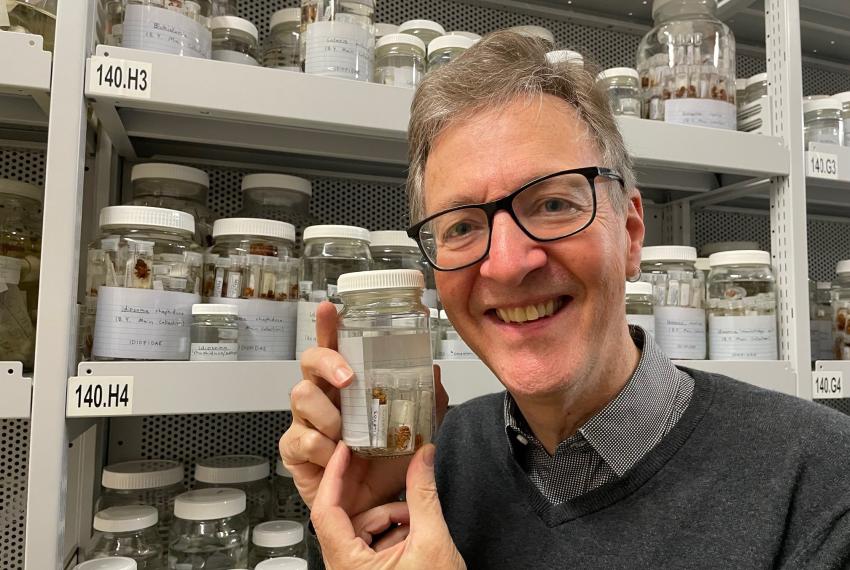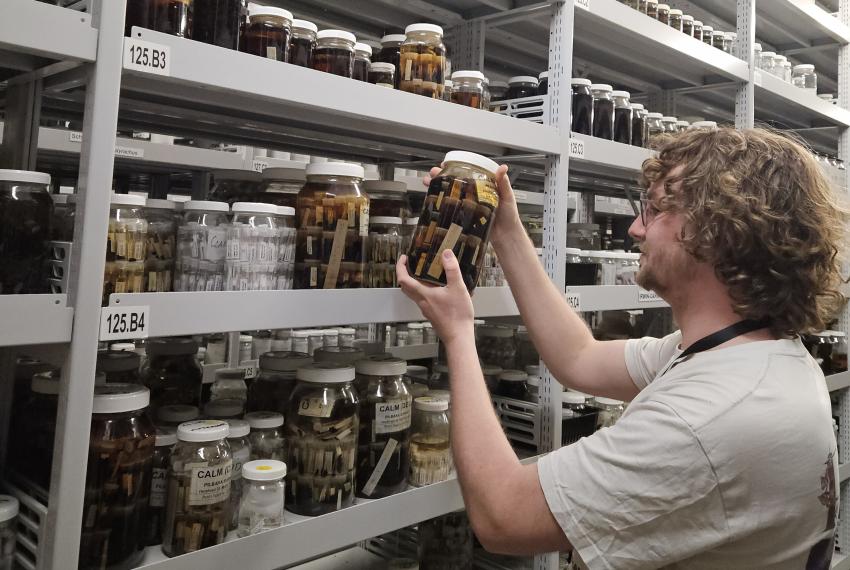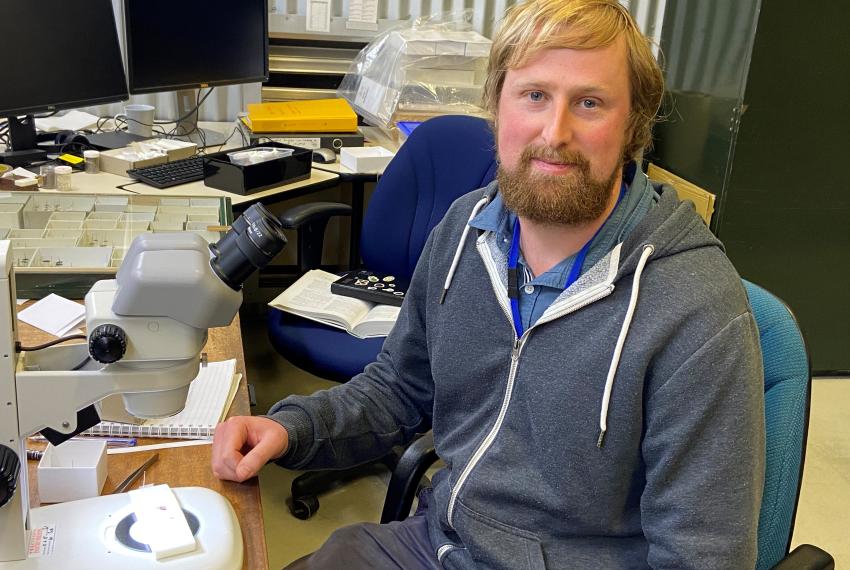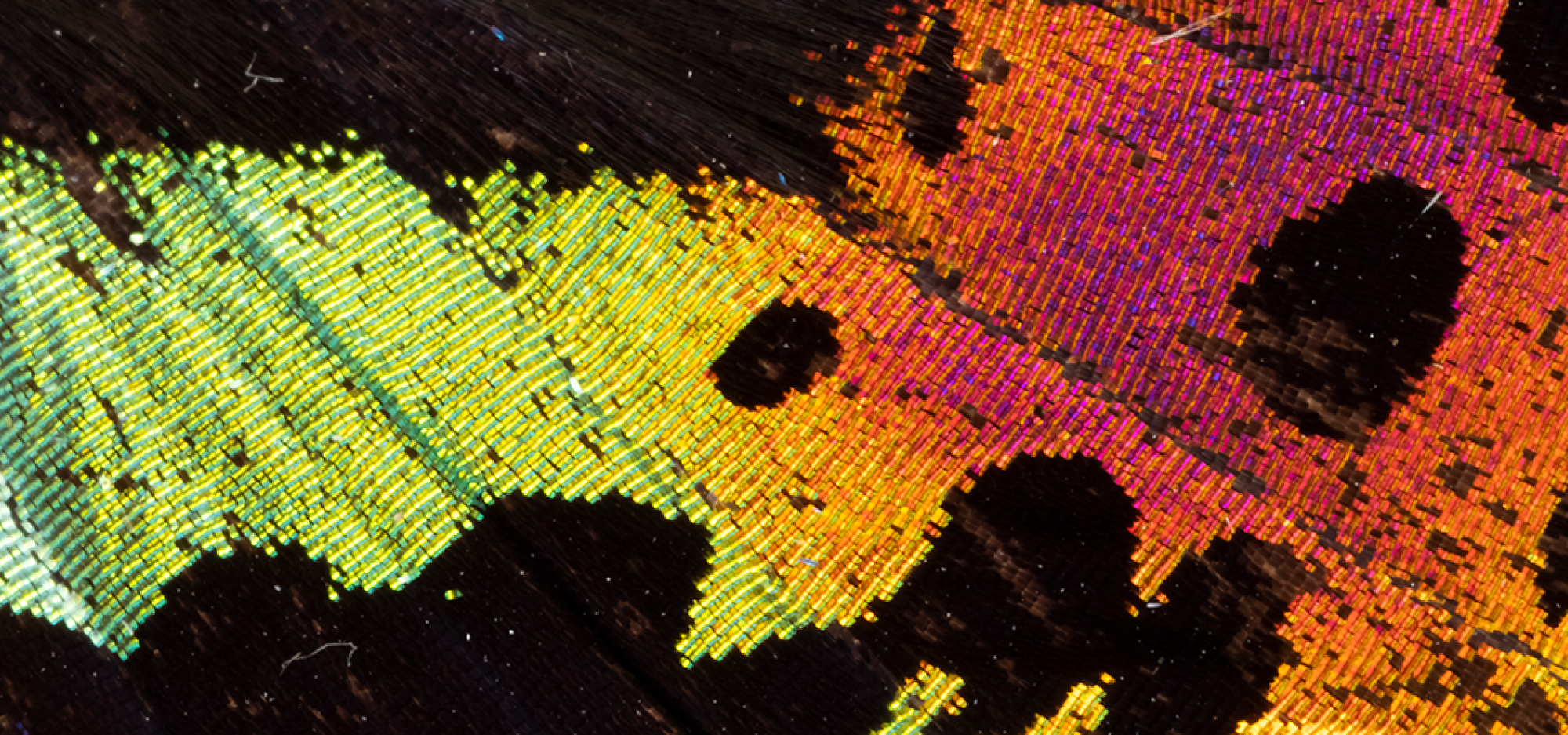
Terrestrial Zoology
Terrestrial Zoology maintains large collections of terrestrial animals, including both terrestrial invertebrates and vertebrates, as well as marine species of the major groups studied (e.g. sea snakes). Taxonomic research is carried out on these collections.
The Terrestrial Zoology department is responsible for maintaining large collections of a wide variety of terrestrial animals.
These include the collections of Arachnology (spiders), Entomology (insects), Herpetology (reptiles and frogs), Mammalogy (mammals) and Ornithology (birds).
Members of the department undertake research into various aspects of terrestrial animals, particularly their classification and naming, evolutionary relationships and ecology and behaviour with frequent scientific publications published widely.
The department maintains the Checklist of the Terrestrial Vertebrate Fauna of Western Australia, which is updated twice a year, as well as Mark Harvey’s World Pseudoscorpiones Catalog. The department has also created an identification resource for identifying dunnarts in Western Australia.
In addition, the department maintains strong working relationships and partnerships with national and international researchers and organisations.
Building on its collections and specimen knowledge with frequent fieldwork and research projects, the department is a frequent contributor to both permanent and temporary exhibitions, and public and educational programming across all of the Western Australian Museum sites.
News and stories
Explore the Terrestrial Zoology collections
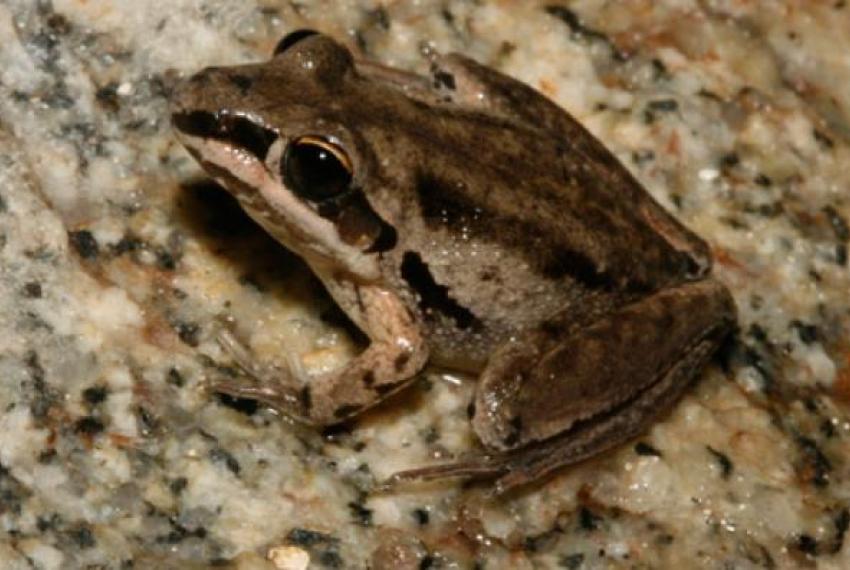
Herpetology (Amphibians and Reptiles)
The Herpetology collection contains specimens of reptiles and frogs from throughout Australia and South-East Asia but predominantly Western Australia. The majority of the collection is preserved in alcohol but some dried and skeletal material is also maintained.
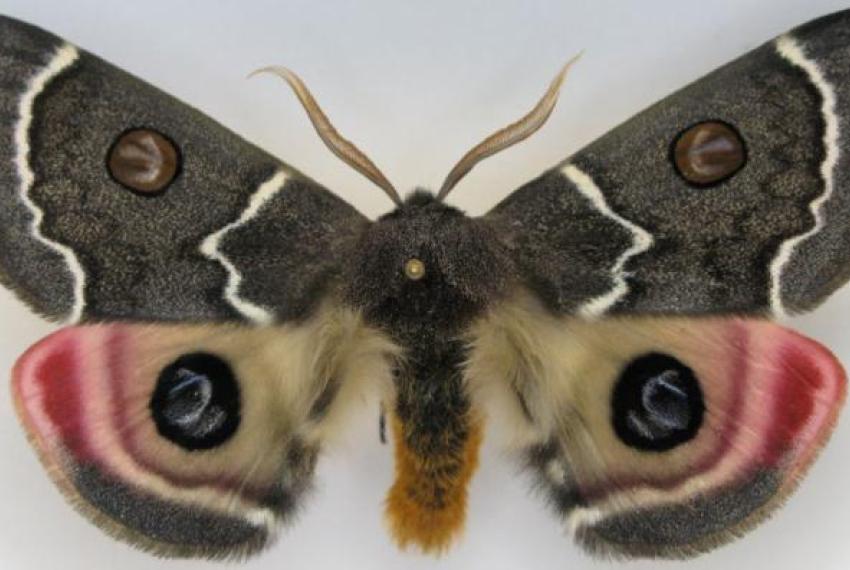
Entomology (Insects)
This collection contains representatives of all kinds of insects, chiefly from Western Australia, but including specimens from other Australian states and elsewhere in the world.
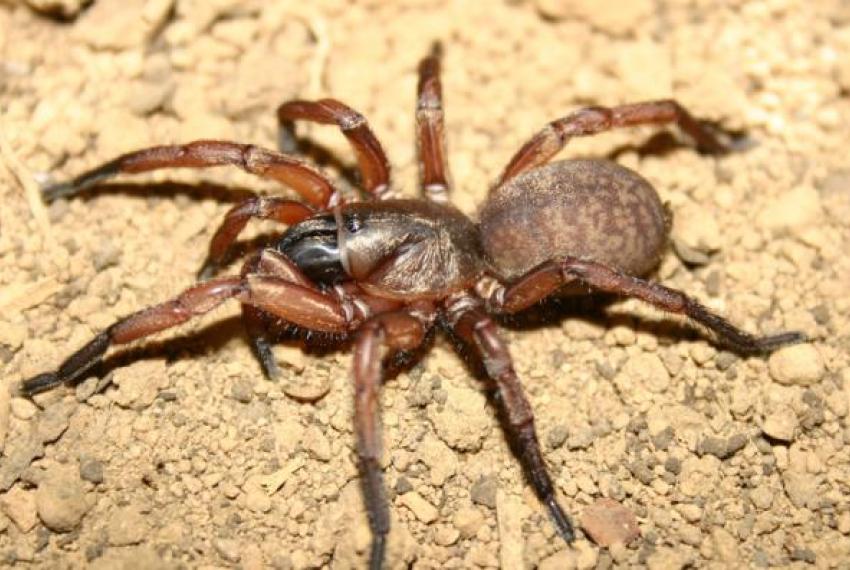
Arachnology (Arachnids and Myriapods)
This collection contains representatives of arachnids and myriapods, chiefly from Western Australia, but including specimens from other Australian regions and elsewhere in the world. Most specimens are stored in ethanol or slide-mounted.
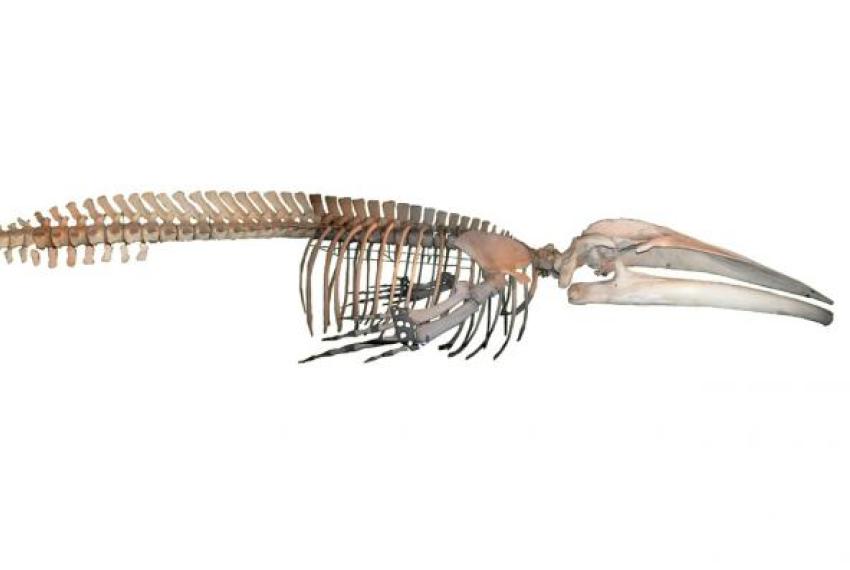
Mammalogy (Mammals)
This collection contains representatives of both terrestrial and aquatic mammals, chiefly from Western Australia, but including specimens from other Australian regions and elsewhere in the world - particularly from southeast Asia.
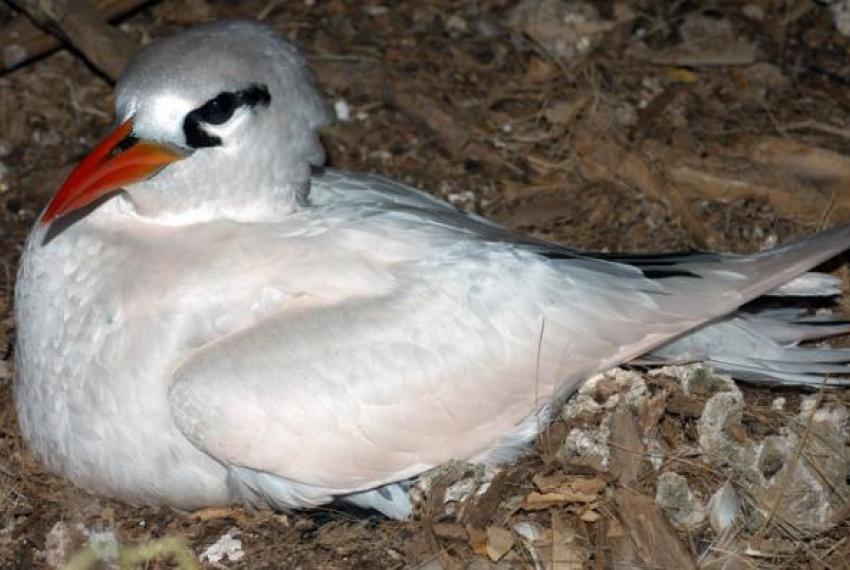
Ornithology (Birds)
The Museum's Ornithology Collection contains eggs, nests, skeletons, taxidermy, alcohol preserved birds and also tissue used for genetic analysis. The bird specimens are sourced from all over Western Australia as well as Christmas Island and Indonesia.
Research projects
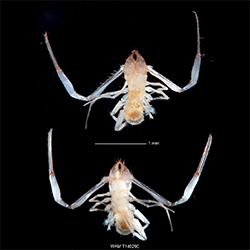
Taxonomy of subterranean pseudoscorpions from the Pilbara
The focus of this project is the pseudoscorpions that occur in subterranean habitats in the Pilbara. Pseudoscorpions are tiny arachnids that resemble a scorpion but lack a long tail and sting. The project has already uncovered over 100 new species.
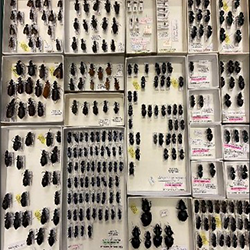
Fortescue Marsh Biodiversity Project
A grant from Fortescue Metals Group to the WA Museum and the Foundation for the WA Museum to document the evolution, taxonomy and systematics of ground beetles (family Carabidae) in the Pilbara region of WA.
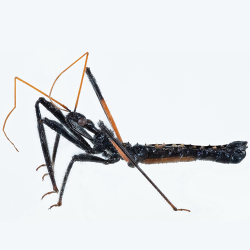
The evolution of tool use in Australian assassin bugs (Reduviidae: Harpactorinae)
Tool use is a rare phenomenon in animals, despite its potential usefulness for solving ecological challenges. Most examples of tool use come from vertebrate species, mainly primates and birds, but more recently some invertebrates have also joined this select group of animals. This project studies the evolution and behaviour of a group of assassin bugs that collect sticky plant exudates, which they use for hunting and caring for their young.
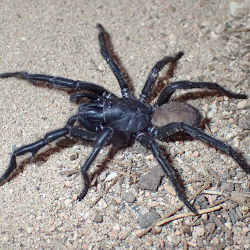
Conservation systematics and rapid taxonomy of Australia's most diverse genus of trapdoor spiders (Mygalomorphae: Anamidae: Aname)
A project on the Australian endemic trapdoor spider genus Aname is being undertaken at the WA Museum, University of Western Australia and Queensland Museum. With over 100 new species to be described, this genus will be one of the largest trapdoor spider genera in the world.
Taxonomy of the skink genus Lerista (Scincidae) in Western Australia
A new National Taxonomy Research Grant on a group of skink lizards has been awarded to a consortium of research institutions including the Western Australian Museum, Monash University and the University of Michigan (U.S.A.). The project focusses on resolving the taxonomy of a particularly diverse and difficult group of small skinks in the genus Lerista. This group has nearly 100 species but owing to their small size and secretive habits there is current confusion over how many species there are, how they differ, where they are and also if any are of conservation concern.
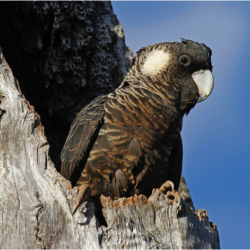
The objectives of the program have been to research the distribution and ecology of Carnaby's, Baudin's and Forest Red-tailed Black Cockatoos and threats to their survival, and to implement measures to encourage the conservation of these birds.

